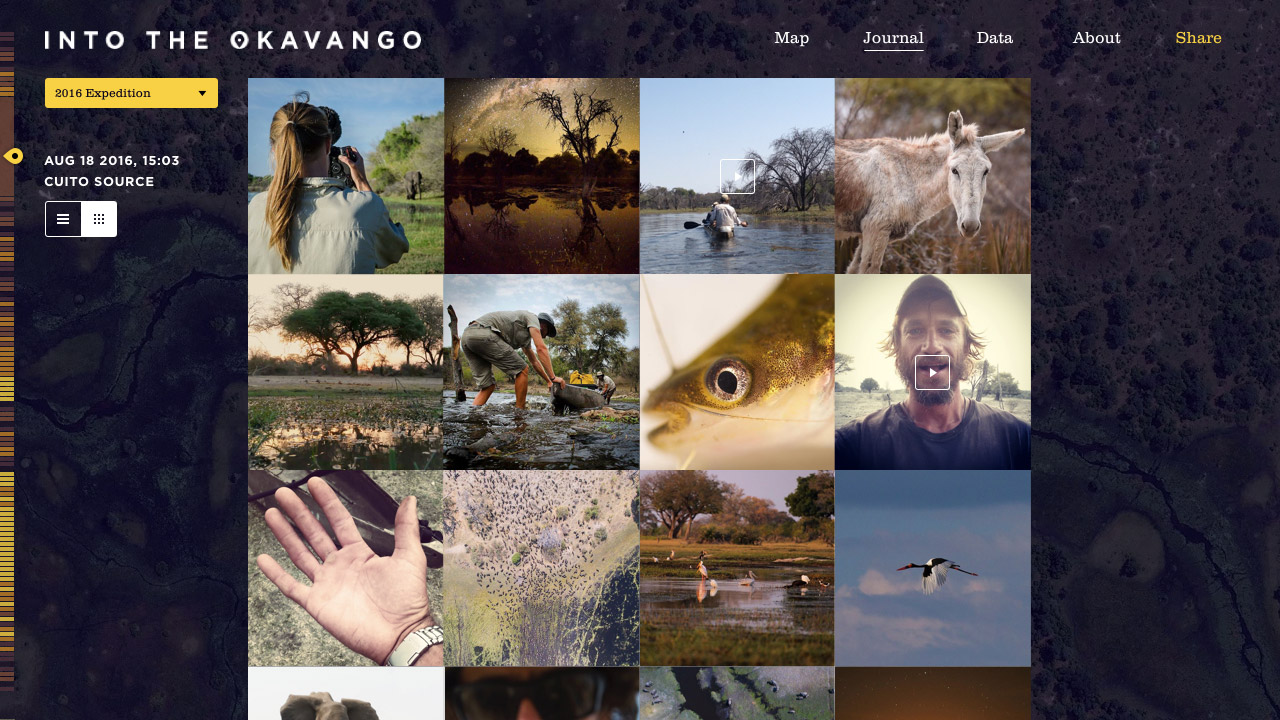The Okavango Delta is one of the world’s last great wetland wildernesses. Although the Delta has been awarded UNESCO WHS Status its catchments in the highlands of Angola are still unprotected and largely unstudied. This project, Into the Okavango, started in 2013 to become a series of expeditions funded by National Geographic, as a journey along the Okavango river from its Angolan catchments to its untouched delta in Botswana.
Satellite view of the Okavango Delta

The expeditions, led by biologist and wilderness protector Steve Boyes, involves teams of Ba'Yei, scientists, engineers and adventurers with the shared goal of documenting wildlife and engaging a broad audience in the protection of this African cradle of life.



The Office for Creative Research set out to visualize the data coming from this epic journey in real time, and communicate it to a broad audience in an engaging, interactive way. The website resulting from this effort displays data which is uploaded daily, via satellite, by the expedition team.



Besides studying wildlife sightings, IntoTheOkavango.org aspires to document the human effort behind the project. Explorers are provided with a number of tracking devices and sensors, as well as monitored social media profiles that recount their experience of the journey in real time. The site is designed as a diary for people to follow the adventurers.



Beyond the protection of the Okavango Delta as an immediate goal, the many people behind the project commit to demonstrate how field science can become an open process. The sites makes its data available through a public API, allowing anyone to remix, analyze or visualize the collected information beyond our initial vision.
Into the Okavango 2014
































